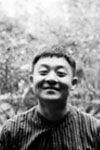LIAO Yifeng

Doctoral Researcher
Yifeng received his Bachelor’s degree in business from the University of Exeter in 2016 and completed a Master’s degree in Interior, Architecture and Design in 2019. He also worked as an interior designer and had experience in hospitality sector.
With background in both Business and Design, Yifeng has a huge interests in how artistic activities can be applied into business, re-branding places and explore an aesthetic appreciation of the brands and places. His research topic is about place branding, urban development, and rural revitalisation.
Research
From art village to future village: Rural strategies for culture-driven growth; Co-creating Chinese Future Villages
PhD Supervisors: Dr. Jieling Xiao; Prof. Michael Butler; Dr. Matthew Jones
‘Art village’ as a term first appeared in the 20th century. The villages were established by artists as it provided them with residence and a place to continue art creation with lower living expenses (Huang, 2019). Over the years, many art villages transformed themselves by chance and become popular destinations among artists, tourists and residents. The successful cases include Beijing 798 art district, Shanghai Tianzifang creative cluster etc., many of these examples have helped to brand their cities and have been influential factors in terms of urban transformation.
In recent years, independent architects, charity organisations and local authorities noticed the trend and started to apply the concept to Chinese rural villages when the term of ‘Beautiful Rural Construction’ was formally introduced in 2013 by the Chinese government in the central planning document (Wu and Liu, 2021). The project of Qingshan Village in Hangzhou, as a starting point, was initially planned to improve the quality of the local water source, had not only succeeded in doing so but also brought new concept of eco-friendly, digitalised rural lifestyle to the local community (Wu and Liu, 2021). Addition to that, more young generations are willing to move back to their hometown and develop the suburban area. Parallel projects can be found around the country including Songyang County near Shanghai, Wencun in Zhejiang Province, Tianziyu Village in Beijing etc.
Following the publication of ‘No. 1 central document for 2022’ by the Communist Party of China Central Committee and the State Council (2022), the article proposed the significance of rural revitalisation, highlighting the necessity of cultural diversity, rural tourism, innovation and sustainability (CPCCCSC, 2022). Papers on future villages are limited as the term only appeared for less than a decade and there is yet articles to analyse the concept in accordance with the official publications. Existing research with regards to place branding and urban transformation can be found and revealed to be valuable for this interdisciplinary concept.
This research aims to find out ‘what a future village is?’ as the first objective in order to give a clear and straightforward definition of this new knowledge. The questions also propose to investigate how effectively culture can be branded and imported to make future villages? A systematic review will be conducted throughout the research as a methodological approach, to identify and appraise published and unpublished reviews of future villages systematically (Smith et al., 2011). Ethnographical method, fieldwork, interviews and workshops will also be applied to produce a narrative account of future village. The output of the research would provide the authorities, local government and independent designers with valuable primary data and perceptions form the local residents. The systematic review would also contribute to identify, evaluate and summarise the existing knowledge of future village.
References
- Communist Party of China Central Committee and the State Council (2022). 中共中央 国务院关于做好2022年全面推进乡村振兴重点工作的意见_中央有关文件_中国政府网. [online] www.gov.cn. Available at: http://www.gov.cn/zhengce/2022-02/22/content_5675035.htm [Accessed 26 Feb. 2022].
- Huang, Q. (2019). Art villages/districts: origins, definitions, analogy and futures. 艺术村、区的由来、定义、类型、未来趋势 | 文章 | ARTLINKART | 中国当代艺术数据库. [online] Artlinkart.com. Available at: http://www.artlinkart.com/cn/article/overview/5b7ezto/about_by2/H/825atApj.
- Smith, V., Devane, D., Begley, C.M. and Clarke, M. (2011). Methodology in conducting a systematic review of systematic reviews of healthcare interventions. BMC Medical Research Methodology, [online] 11(1). Available at: https://bmcmedresmethodol.biomedcentral.com/articles/10.1186/1471-2288-11-15.
- Wu, V. and Liu, B. (2021). Qingshan: The First Future Village of Zhejiang | Partner Articles, Cities4Forests. [online] Available at: https://cities4forests.com/partner-articles/qingshan-the-first-future-village-of-zhejiang/ [Accessed 14 Feb. 2022].